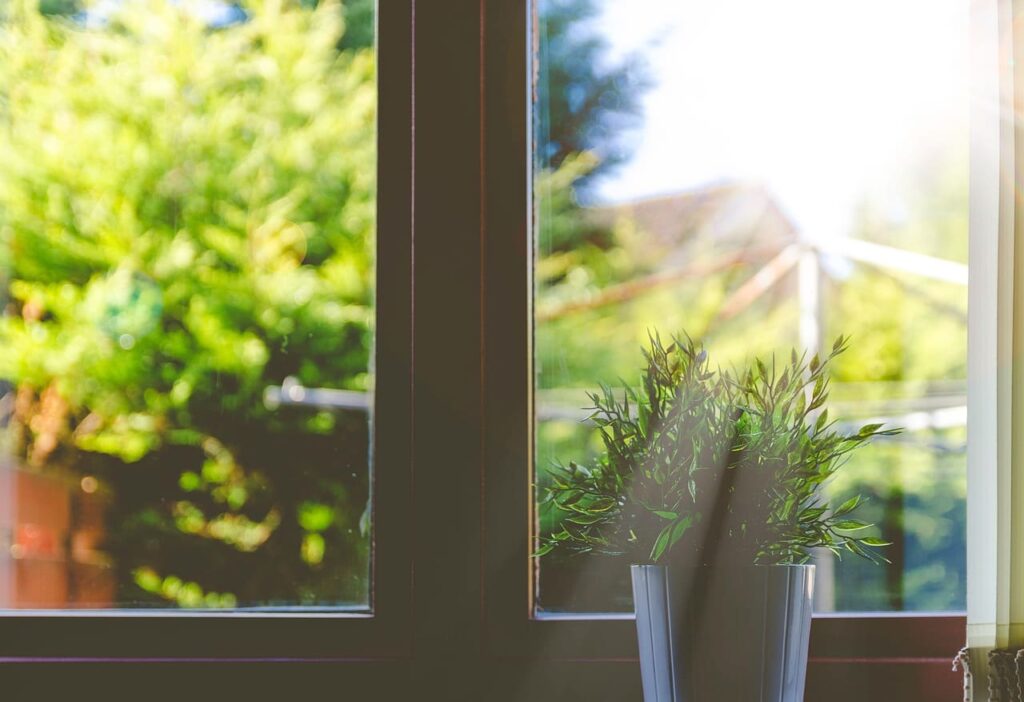Contents
Introduction to Low-Light Plants
Welcome to a world where greenery thrives even in the dimmest corners of your home! Low-light plants are like little pockets of nature that bring life and vitality to indoor spaces with minimal sunlight. If you’ve been yearning to add some botanical beauty to your living space but thought it wasn’t possible due to a lack of natural light, think again.
This blog article explores low-light plants, their benefits, top plant choices for indoor areas, care tips, creative display ideas, and potential challenges. Get ready to discover how these resilient beauties can transform your home into a lush sanctuary!
Benefits of Having Low Light Plants in Your Home

Adding low-light plants to your home enhances the aesthetics and offers numerous benefits. These green companions are perfect for spaces with minimal natural light, bringing life and vibrancy into dim corners.
Low-light plants have been proven to purify indoor air by absorbing toxins and releasing oxygen during photosynthesis. This leads to a healthier living environment, reducing pollutants that can cause respiratory issues.
Moreover, these plants can help boost mood and reduce stress levels. The calming presence of greenery has a soothing effect on the mind, promoting relaxation and overall well-being.
In addition to their air-purifying qualities, low-light plants require minimal maintenance, making them ideal for busy individuals or those new to plant care. They are resilient and adaptable, thriving in environments where other plants may struggle.
By incorporating low-light plants into your home decor, you improve the ambience and reap their many benefits – from cleaner air to tranquillity amidst the everyday hustle and bustle.
Top 5 Low Light Plants for Indoor Spaces
Looking to brighten up your indoor space with some greenery but need more natural light? Low-light plants are the perfect solution for adding a touch of nature to your home. Here are the top 5 low light plants that thrive in indoor spaces:
First up, we have the Snake Plant. Known for its resilience and air-purifying qualities, this plant can survive in low-light conditions with minimal care.
Next on the list is the ZZ Plant, a hardy and stylish option that requires little maintenance and thrives in low-light environments.
The Pothos Plant is another excellent choice for beginners or those with busy schedules. Its trailing vines and heart-shaped leaves add a pop of green to any room.
If you’re looking for a flowering plant, the Peace Lily is an elegant option that blooms beautifully even in dimly lit corners.
Last but not least, we have the Chinese Evergreen. This versatile plant comes in various shades of green and can easily thrive in low-light settings.
With these top 5 low light plants, you can bring life and freshness into your home without direct sunlight.
– Snake Plant
Looking to add a touch of green to your home but need help with low-light conditions? Enter the Snake Plant, a resilient and stylish option for indoor spaces. This plant is visually appealing with its striking sword-shaped leaves and thrives in low-light environments.
Known for its air-purifying qualities, the Snake Plant is perfect for improving indoor air quality while adding a modern flair to their decor. Its ability to tolerate neglect makes it an ideal choice for busy individuals or those new to plant care.
With minimal watering requirements, the Snake Plant is a low-maintenance companion that can survive weeks without attention. Whether placed on a windowsill or in a dimly lit corner, this plant will continue to thrive and bring life into any room.
Embrace the beauty and simplicity of the Snake Plant as you enhance your living space with this versatile and adaptable botanical gem.
– ZZ Plant
Looking to add a touch of greenery to your home but dealing with low light conditions? The ZZ Plant might be the perfect solution for you. This hardy and resilient plant thrives in low-light environments, making it ideal for those dimly lit corners that need a pop of life.
With its glossy, dark green leaves that grow in an attractive, upright fashion, the ZZ Plant adds a modern and stylish element to any space. It is visually appealing and requires minimal maintenance, making it perfect for busy individuals or those new to plant care.
One of the key benefits of the ZZ Plant is its air-purifying properties, helping to improve indoor air quality by removing toxins. Plus, its ability to survive with infrequent watering makes it a hassle-free addition to your home decor.
So why not bring home a ZZ Plant today and enjoy the beauty and benefits this low-light-loving plant offers?
– Pothos Plant
The Pothos Plant, Devil’s Ivy, is famous for low-light indoor spaces. Its vibrant green foliage and trailing vines add a touch of natural beauty to any room. One of the easiest plants to care for, the Pothos thrives in indirect sunlight and only requires occasional watering.
This hardy plant can adapt to various lighting conditions, making it perfect for those with less-than-ideal natural light in their homes. The Pothos is known for its air-purifying qualities, helping to freshen up your living space while adding a pop of colour.
The cascading vines make the Pothos look stunning when placed on high shelves or hanging baskets. You can train its vines to climb trellises or walls for a unique decorative touch. Whether you’re a seasoned plant parent or just starting the versatile and visually appealing Pothos Plant is sure to brighten up your home effortlessly
– Peace Lily
The Peace Lily, also known as Spathiphyllum, is a popular choice for indoor spaces due to its elegant and serene appearance. With its glossy green leaves and delicate white flowers, this plant adds a touch of tranquillity to any room.
One of the standout features of the Peace Lily is its ability to thrive in low light conditions, making it perfect for those shady corners or rooms with limited sunlight. This resilient plant can even help purify the air by removing toxins like formaldehyde and benzene.
When caring for a Peace Lily, keep the soil moist but not soggy. It’s important to avoid overwatering as this can lead to root rot. Additionally, occasional misting or wiping down the leaves can help keep them clean and dust-free.
With proper care, your Peace Lily will reward you with stunning blooms that add beauty and freshness to your living space. So why not bring some peace into your home with this lovely plant?
– Chinese Evergreen
The Chinese Evergreen is famous for low-light environments because it can thrive with minimal sunlight. Its lush green leaves with unique patterns add a touch of elegance to any indoor space. This plant is known for its air-purifying qualities, making it a great addition to your home.
One of the best features of the Chinese Evergreen is its low maintenance requirements, making it perfect for busy individuals or those new to plant care. It only needs occasional watering and can tolerate fluctuations in humidity levels.
With proper care, this plant can grow into a beautiful, bushy specimen that will brighten up any corner of your home. Its versatility in various conditions makes it an ideal choice for experienced and novice plant enthusiasts.
Consider adding a Chinese Evergreen to your indoor garden collection and enjoy its beauty and benefits to your living space.
How to Care for Low-Light Plants
Caring for low-light plants is easy and rewarding. These resilient beauties thrive in indirect sunlight, making them perfect for homes with limited natural light. To keep your low-light plants healthy, water them sparingly, as they don’t require frequent watering. Allowing the soil to dry out in between waterings is crucial since overwatering can cause root rot.
When it comes to fertilizing, opt for a balanced liquid fertilizer diluted to half strength and apply it during the growing season. Regular dusting of the leaves will help photosynthesis by removing any buildup that could block sunlight absorption. Keep an eye out for pests like spider mites or mealybugs; wiping down the leaves regularly can prevent infestations.
Pruning dead or yellowing leaves will encourage new growth and maintain the plant’s health. Consider rotating your low-light plants occasionally to ensure even growth on all sides. Following these simple care tips, you’ll enjoy lush greenery year-round in your home!
Creative Ways to Display and Decorate with Low-Light Plants

Looking for creative ways to showcase your low-light plants in your home? Let’s explore some fun and unique ideas to help you elevate your indoor space!
Consider hanging planters from the ceiling or on a wall to add depth and visual interest. This saves floor space and brings a touch of greenery to eye level.
Mix and match different plant sizes and textures to create a dynamic display. Grouping plants can make a bold statement while adding variety.
Try placing low-light plants in unconventional containers like vintage teacups, glass terrariums, or even old mason jars. Upcycling items into plant pots adds charm and personality to your decor.
Don’t be afraid to get creative with plant placement – think beyond shelves and tables. Utilize windowsills, bathroom corners, or even bookshelves as unexpected spots for your green companions.
By thinking outside the box, you can transform any room into a lush oasis filled with the beauty of low-light plants!
Potential Challenges of Growing Low-Light Plants
While low-light plants can thrive in environments with minimal sunlight, they come with challenges. One potential issue is overwatering – since these plants require less light, they also need less water to avoid root rot. Allowing the soil to dry out in between waterings is crucial.
Another challenge is finding the right balance of humidity for your low-light plants. Some species may prefer higher humidity levels than others, so it’s crucial to research the specific needs of each plant you have.
Pests like spider mites and mealybugs can also be a concern when growing low-light plants indoors. Regularly inspecting your plants for any signs of infestation and taking prompt action is critical to keeping them healthy. Inadequate air circulation in indoor spaces can lead to issues like mould or mildew on low-light plant leaves. Placing a fan nearby or opening windows periodically can help improve airflow and prevent such problems from arising.
Good luck, game changer!
Explore our additional articles for more insights and enjoy!
- What Home Ventilation Upgrades Are Essential for Senior Safety?

- The Benefits of Air Duct Cleaning Services

- Do the Paper Cup Holders Reliably Support Heavy or Multiple Cups Without Bending or Breaking?

- Influencers Gone Wild: The Unpredictable World of Social Media Personalities

- Dalia Tabbaa: Revolutionizing Home Decor
- Bradley Cooper Gigi Hadid: A Detailed Look at the Hollywood Connection






